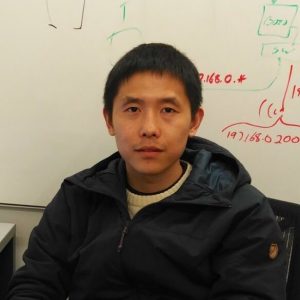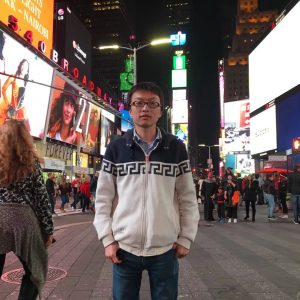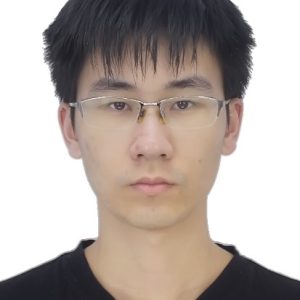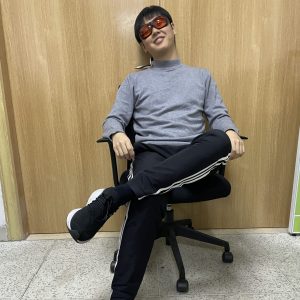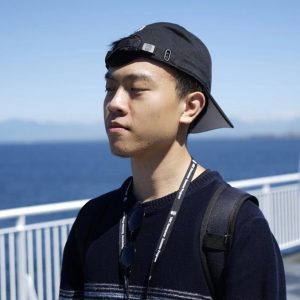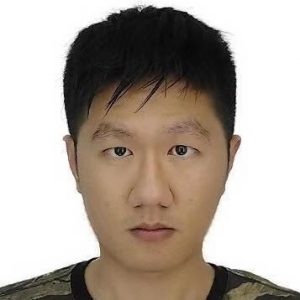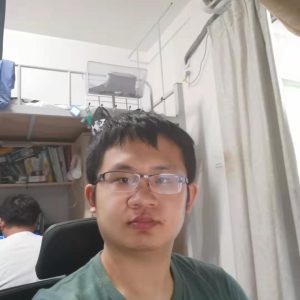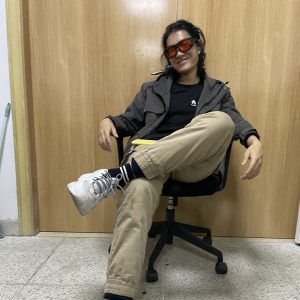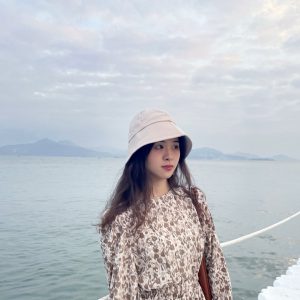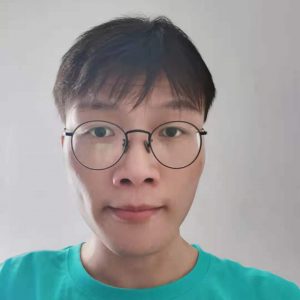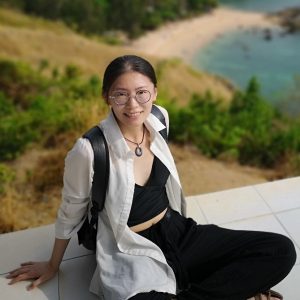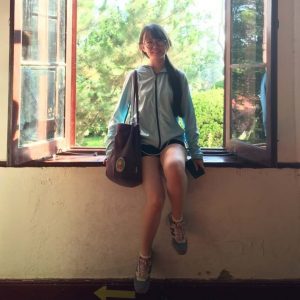WHO WE ARE
Spin Quantum Computing Laboratory was established in September 2017 and sponsored by the Department of Physics at Southern University of Science and Technology (SUSTech, 南方科技大学), Shenzhen Institute for Quantum Science and Engineering (SIQSE, 深圳市量子科学与工程研究院), and Peng Cheng Laboratory (鹏城实验室). We conduct research on spin-based quantum technologies and the applications in quantum computing, with the experimental platforms including nuclear magnetic resonance (NMR) and optically detected magnetic resonance (ODMR).
Although the team is young (all five faculty members were born after 1985), but it is very creative and productive. The team has published over 100 papers in quantum computing, including over 20 papers in Nature Physics, Physical Review Letters, Physical Review X, and npj Quantum Information. The team hosts grants for Thousand Talents Plan for Young Professional (青年千人计划), two General Programs (面上项目) and two Youth Programs (青年项目) of National Natural Science Foundation of China.
In our laboratory, there are many activities in daily life. Group eating, group singing, and group mountain-climbing are just the basic, and we are exploring more (escape room on the way!). If you wish to enjoy the quantum life to be a postdoc, graduate student or research assistant, welcome to join this harmonic family!
MEMBERS
Dawei Lu
Associate Professor
Research Interests:
1. Quantum information processing in nuclear and electron spin magnetic resonance systems.
2. Development of spin control techniques to achieve high-fidelity coherent control.
3. Benchmarks in large-scale systems.
4. Quantum simulation towards large-scale quantum systems.
5. Experimental realization of adiabatic quantum computing model.
6. Quantum state tomography and process tomography.
Email: ludw@sustech.edu.cn
Jun Li
Associate Professor
Research Interests:
1. Quantum system control,
2. quantum computation,
3. quantum thermalization,
4. spin dynamics,
5. nuclear magnetic resonance experiments
Email: lij3@sustech.edu.cn
Tao Xin
Assistant Professor
Research Interests:
1. Spin-based quantum computing, algorithm, and simulation,
2. Efficient quantum state tomography and quantum entanglement detection,
3. R & D for Benchtop NMR
Email: xint@sustech.edu.cn
Xinfang Nie
Post-Doctoral Fellow
Email: niexf@sustech.edu.cn
Yu Tian
Ph.D. Student
Email: 11930835@mail.sustech.edu.cn
Amandeep Singh
Post-Doctoral Fellow
Email: singh@sustech.edu.cn
Xiaodong Yang
Post-Doctoral Fellow
Email: yangxd@sustech.edu.cn
Xinyue Long
Ph.D. Student
Email: 11930495@mail.sustech.edu.cn
Hanyu Chen
Ph.D. Student
Email: 12051013@mail.sustech.edu.cn
Ze Zhang
Ph.D. Student
Email: zhaoxz@mail.sustech.edu.cn
Xiangyu Wang
Graduate Student
Email: 12032029@mail.sustech.edu.cn
Zidong Lin
Graduate Student
Email: 11930042@mail.sustech.edu.cn
Chao Wei
Graduate Student
Email: 11930019@mail.sustech.edu.cn
Bowen Shao
Graduate Student
Email: bowen.geim@gmail.com
Shitao Zhang
Graduate Student
Email: 12132871@mail.sustech.edu.cn
Yue Zhai
Graduate Student
Email: 12132868@mail.sustech.edu.cn
Liangyu Che
Ph.D. Student
Email: 12031041@mail.sustech.edu.cn
Chudan Qiu
Graduate Student
Email: 11930031@mail.sustech.edu.cn
Yunrui Ge
Graduate Student
Email: 11930013@mail.sustech.edu.cn
Hongfeng Liu
Graduate Student
Email: 12032034@mail.sustech.edu.cn
Yulei Huang
Graduate Student
Email: 12032892@mail.sustech.edu.cn
Feng Xu
Graduate Student
Email: 12132858@mail.sustech.edu.cn
Alumni
Shimin Zhang
Research Assistant
Email: szhan213@ucsc.edu
Xiuzhu Zhao
Research Assistant
Email: zhaoxz@mail.sustech.edu.cn
RESEARCH

Quantum Control
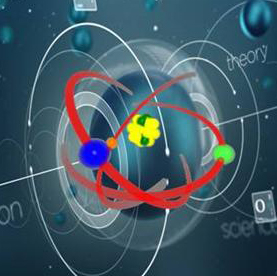
NMR

Quantum Simulation
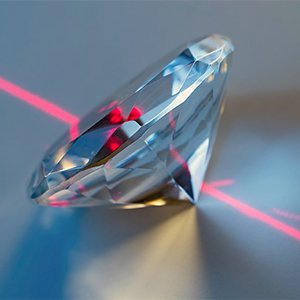
Spin Control in NV System
We pay attention to robust control in NV system, such like optimal control theory, geometric quantum control and control with dynamic decoupling.

Benchtop NMR for quantum education
NEWS
Experimental Quantum Principal Component Analysis via Parametrized Quantum Circuits
The Institute of Quantum Science and Engineering and the Department of Physics at the Southern University of Science and Technology have recently made important progress in the research of quantum machine learning. Tao Xin, Jun Li, Dawei Lu and Ying Dong have implemented a quantum principal component analysis algorithm based on parameterized quantum circuits on a four qubits spin system based on the nuclear magnetic resonance (NMR) quantum computing platform. The article were published in the famous journal Physical Review Letters as “Experimental Quantum Principal Component Analysis Via Parameterized Quantum Circuits”.
Principal component analysis (PCA) is a common and time-consuming unsupervised learning algorithm in machine learning. This method uses orthogonal transformation to transform the observed data represented by linearly dependent variables into a few data represented by linearly independent variables. The linearly independent variables are called principal components. In 2014, Lloyd, Mohseni and Rebentros proposed the quantum principal component analysis algorithm (QPCA) and published it in the Nature Physics, which can accelerate the classical principal component analysis algorithm exponentially. However, the realization of this algorithm requires a large amount of experiment resources, resulting in the lack of experiment to proof for the proposed quantum principal component analysis.
Parameterized quantum circuits (PQC) usually consists of fixed gates (such as controlled NOTs) and adjustable gates (such as qubit rotations). PQC formalizes the target problem into a parametric optimization problem and uses a hybrid system of quantum and classical hardware to find approximate solutions. For example, the variable component eigen-solver (VQE) has been used to search for the ground state Hamiltonian of molecules. Therefore, the research team proposed a new quantum principal component algorithm based on parameterized quantum circuits, which can reduce the demands of a large number of experiment resources, so that the quantum principal component analysis can be implemented experimentally.
They applied the algorithm to face recognition, iteratively optimizing the PQC by using a classic-quantum hybrid control method, in which the objective function and gradient were measured on a quantum processor, parameters were stored and updated by classical computer. The quantum principal component analysis (QPCA) algorithm is implemented in a four qubits NMR quantum simulator.
This is the first time to implement the quantum principal component analysis (QPCA) algorithm by parameterized quantum circuits, which provides a new way for the theoretical and experimental application research of QPCA.
In this study, Tao Xin, an assistant researcher from the Quantum Research Institute, was the first author, Liangyu Che, a Ph.D. student from the Department of Physics, was the co-first author, and Jun Li, an associate researcher, and Dawei Lu, an associate professor from the Department of Physics, was the co-corresponding author. The research was also supported by the Ministry of Science and Technology, the National Natural Science Foundation of China, the Science and Technology Department of Guangdong Province, the Science and Technology Innovation Commission of Shenzhen Municipality, and Southern University of Science and Technology.
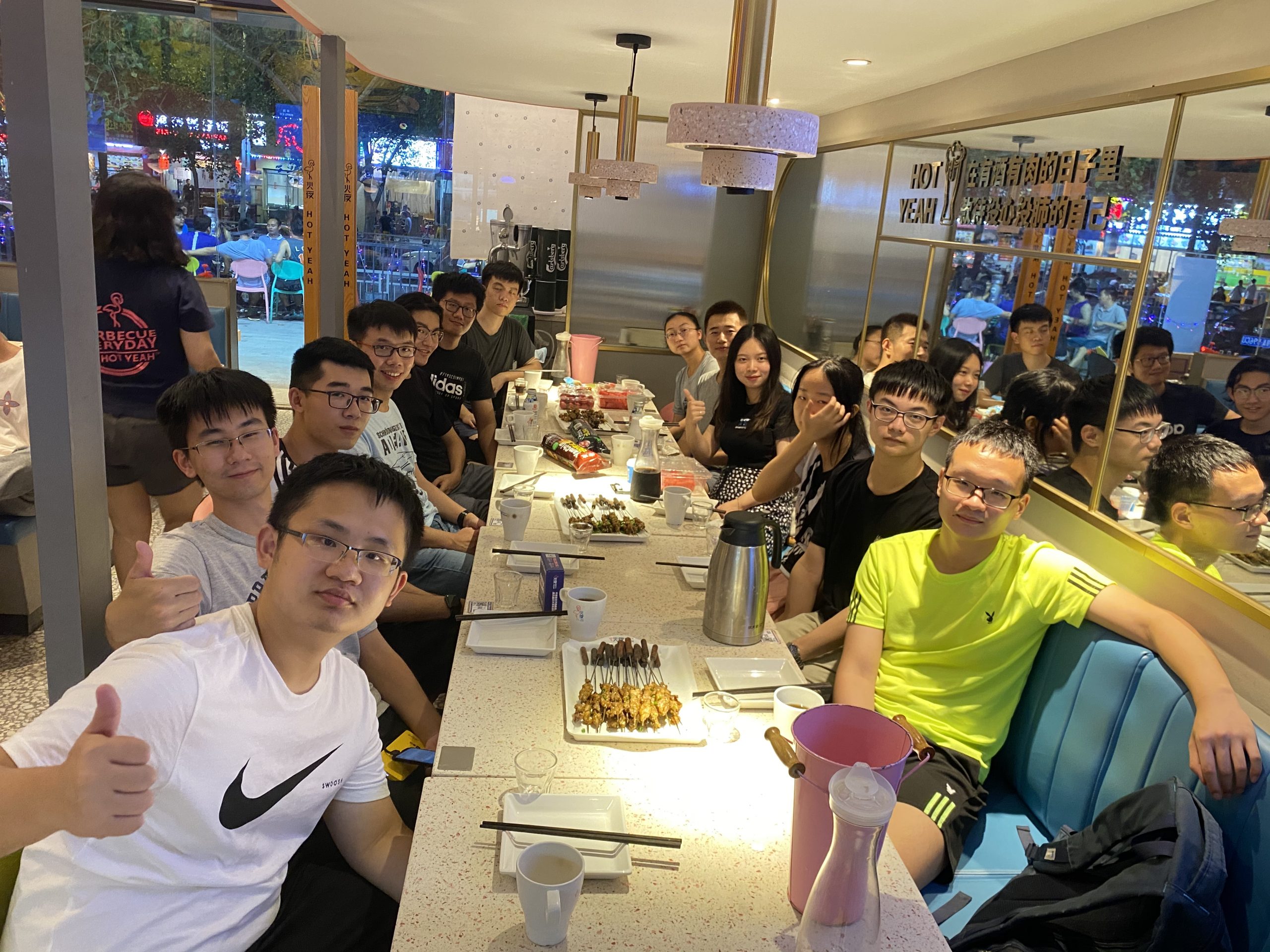
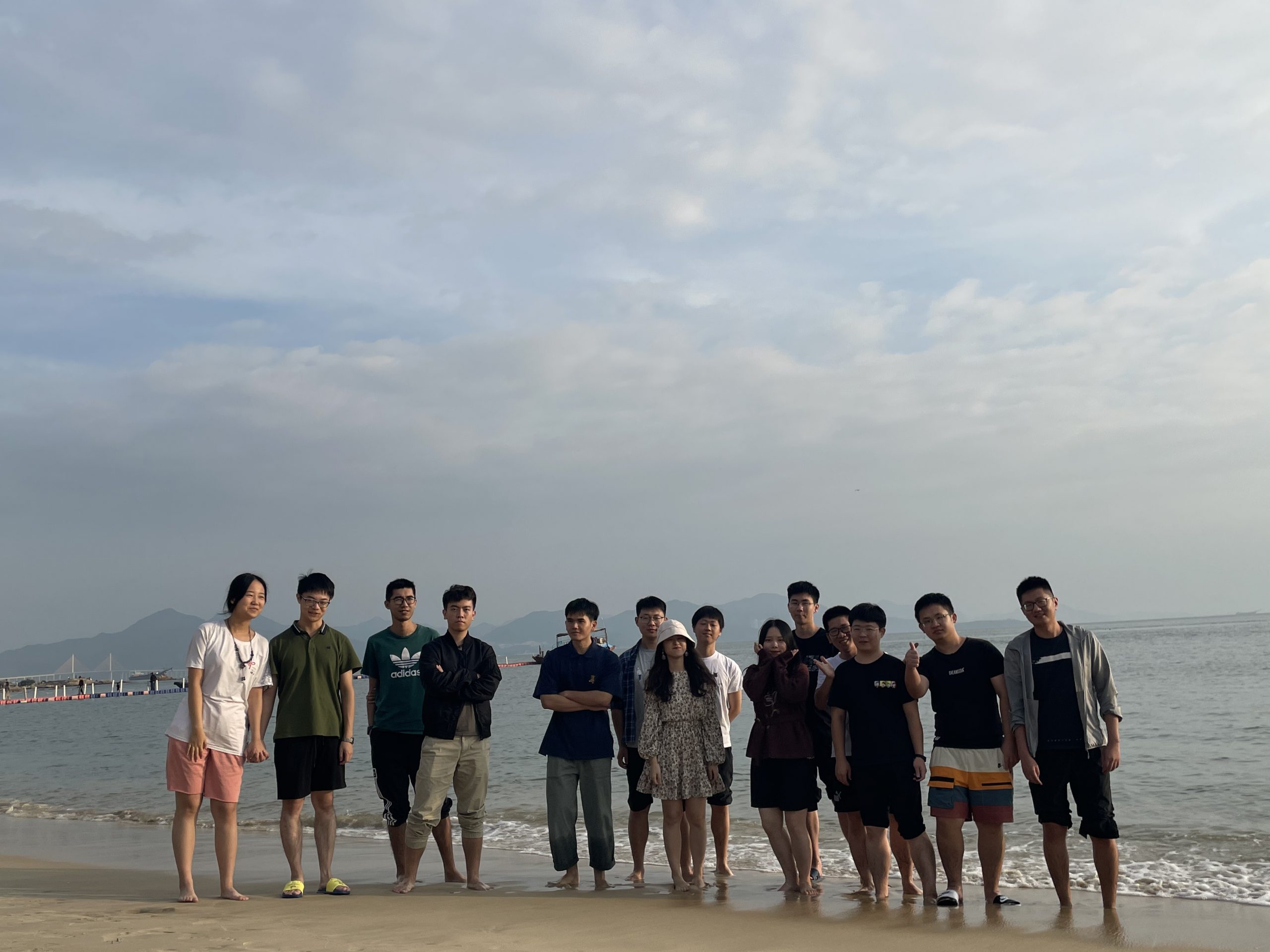
PUBLICATIONS
Preprints
(*: equal contributions; †: corresponding author)
- X. F. Nie*, X. R. Zhu*, C. Xi, X. Y. Long, Z. D. Lin, Y. Tian, C. D. Qiu, X. D. Yang, Y. Dong, J. Li†, T. Xin†, and D.W. Lu†, Experimental Realization of a Quantum Refrigerator Driven by Indefinite Causal Orders, arXiv:2011.12580 (2020).
- X. F. Nie, Z. Zhang, X. Z. Zhao, X. Tao†, D.W. Lu†, and J. Li†, Detecting scrambling via statistical correlations between randomized measurements on an NMR quantum simulator, arXiv:1903.12237 (2019).
Refereed Papers
(*: equal contributions; †: corresponding author)
- Z. Zhang*, X. Y. Long*, X. Z. Zhao, Z. D. Lin, K. Tang, H. F. Liu, X. D. Yang, X. F. Nie, J. S. Wu, J. Li, T. Xin†, K. R. Li†, and D.W. Lu†, Identifying Abelian and Non-Abelian Topological Orders in the String-Net Model using a Quantum Scattering Circuit, Phys. Rev. A (Letter) 105, L030402 (2022).
- Y. C. Li*, T. Xin*, C. D. Qiu, K. R. Li, G. Q. Liu, J. Li, Y. D. Wan†, and D.W. Lu†, Dynamical-Invariantbased Holonomic Quantum Gates: Theory and Experiment, Fundamental Research, in press (2022). arXiv.
- T. Xin*, L. Y. Che*, C. Xi, A. Singh, X. F. Nie, J. Li†, Y. Dong†, and D.W. Lu†, Experimental Quantum Principal Component Analysis via Parametrized Quantum Circuits, Phys. Rev. Lett. 126, 110502 (2021).
- L. Y. Che*, C. Wei*, Y. L. Huang, D. F. Zhao, S. Z. Xue, X. F. Nie, J. Li†, D.W. Lu†, and T. Xiny, Learning quantum Hamiltonians from single-qubit measurements, Phys. Rev. Research 3, 023246 (2021).
- D. F. Zhao*, C. Wei*, S. Z. Xue, Y. L. Huang, X. F. Nie, J. Li, D. Ruan, D.W. Lu†, T. Xin†, and G. L. Long, Characterizing quantum simulations with quantum tomography on a spin quantum simulator, Phys. Rev. A 103, 052403 (2021).
- D. F. Zhao, S. Z. Xue, D. Ruan, J. Li, D.W. Lu, W. Huang, T. Xin, H. Li†, X. F. Nie†, and G. L. Long, Experimental observation of a quadrupolar phase via quench dynamics on a spin simulator, Phys. Rev. A 104, 062615 (2021).
- C. D. Qiu, X .F. Nie†, and D.W. Lu†, Quantum simulations with nuclear magnetic resonance system (Invited Review), Chin. Phys. B 30, 048201 (2021).
- Y. Tian, Z. D. Lin, X. Y. Wang, L. Y. Che, and D.W. Lu†, Experimental progress of quantum machine learning based on spin systems (Invited Review, in Chinese), Acta. Phys. Sin. 70, 140305 (2021).
- S. Y. Hou, G. R. Feng, Z. P. Wu, H. Y. Zou, W. Shi, J. F. Zeng, C. F. Cao, S. Yu, Z. K. Sheng, X. Rao, B. Ren, D.W. Lu, J. T. Zou, G. X. Miao†, J. G. Xiang†, and B. Zeng†, SpinQ Gemini: a desktop quantum computing platform for education and research, EPJ Quantum Technol. 8, 1 (2021). arXiv.
- T. Xin*, Y. S. Li*, Y. A. Fan, X. R. Zhu, Y. J. Zhang, X. F. Nie, J. Li†, Q. H. Liu†, and D.W. Lu†, Quantum Phases of Three-Dimensional Chiral Topological Insulators on a Spin Quantum Simulator, Phys. Rev. Lett. 125, 090502 (2020). arXiv
- X. F. Nie*, B. B. Wei*, X. Chen, Z. Zhang, X. Z. Zhao, C. D. Qiu, Y. Tian, Y. L. Ji, X. Tao†, D.W. Lu†, and J. Li†, Experimental Observation of Equilibrium and Dynamical Quantum Phase Transitions via Out-of-Time-Ordered Correlators, Phys. Rev. Lett. 124, 250601 (2020). arXiv
- H. Y. Wang, S. J. Wei, C. Zheng, X. Y. Kong, J. W. Wen, X. F. Nie, J. Li, D.W. Lu, and T. Xin†, Experimental simulation of the four-dimensional Yang-Baxter equation on a spin quantum simulator, Phys. Rev. A. 102, 012610 (2020).
- Y. M. Song*, Y. Tian*, Z. Y. Hu, F. F. Zhou, T. T. Xing, D.W. Lu, B. Chen†, Y. Wang, N. Y. Xu†, and J. F. Du†, Pulse-width-induced polarization enhancement of optically-pumped N-V electron spin in diamond, Photonics Research 8, 1289 (2020). arXiv
- T. Xin, X. F. Nie, X. Y. Kong, D.W. Lu†, and J. Li†, Quantum state tomography via a variational hybrid quantum-classical method, Phys. Rev. Applied 13, 024013 (2020). arXiv
- T. Xin, S. J. Wei, J. L. Cui, J. X. Xiao, I. Arrazola, L. Lamata, X. Y. Kong, D.W. Lu†, E. Solano, and G. L. Long†, Quantum algorithm for solving linear differential equations: Theory and experiment, Phys. Rev. A 101, 032307 (2020). arXiv
- T. Xin, S. R. Lu, N. P. Cao, G. Anikeeva, D.W. Lu, J. Li†, G. L. Long, and B. Zeng†, Local-measurementbased quantum state tomography via neural networks, accepted by npj Quantum Information (2019). arXiv.
- Y. Wang, W. T. Ji, Z. H. Chai, Y. H. Guo, M. Q. Wang, X. Y. Ye, P. Yu, L. Zhang, X. Qin, P. F. Wang, F. Z. Shi, X. Rong, D.W. Lu†, X. J. Liuy, and J. F. Du†, Experimental observation of dynamical bulk-surface correspondence for topological phases, accepted by Phys. Rev. A (2019). arXiv
- K. R. Li, Y. N. Li, M. X. Han, S. R. Lu, J. Zhou, D. Ruan, G. L. Long, Y. D. Wan†, D.W. Lu†, B. Zeng†, and R. Laflamme, Quantum Spacetime on a Quantum Simulator, Communications Physics 2, 122 (2019). arXiv
- J. Li†, Z. H. Luo, T. Xin, H. Y. Wang, D. Kribs, D. W. Lu†, B. Zeng†, and R. Laflamme, Experimental Im- plementation of Efficient Quantum Pseudorandomness on a 12-spin System, Phys. Rev. Lett. 123, 030502 (2019). arXiv
- W. Q. Zheng, H. Y. Wang, T. Xin, X. F. Nie†, D. W. Lu†, and J. Li†, Optimal Bounds on State Transfer Under Quantum Channels with Application to Spin System Engineering, Phys. Rev. A 100, 022313 (2019). arXiv
- Z. H. Luo, Y. Z. You, J. Li, C. M. Jian, D. W. Lu†, C. K. Xu, B. Zeng†, and R. Laflamme, Observing Fermion Pair Instability of the Sachdev-Ye-Kitaev Model on a Quantum Spin Simulator, npj Quantum Informa-
tion 5, 7 (2019). arXiv. - K. R. Li∗, M. X. Han∗, D. X. Qu, Z. C. Huang, G. L. Long, Y. D. Wan†, D.W.Lu†, B. Zeng, and R. Laflamme, Measuring Holographic Entanglement Entropy on a Quantum Simulator, npj Quantum Information 5, 30 (2019). arXiv.
- G. R. Feng, F. Cho, H. Katiyar, J. Li, D. W. Lu, J. Baugh†, and R. Laflamme†, Closed-Loop Quantum Opti- mal Control in a Solid-State Two-Qubit System, Phys. Rev. A 98, 052341 (2018). arXiv.
- S. R. Lu∗, S. L. Huang∗, K. R. Li, J. Li†, J. X. Chen, D.W.Lu†, Z. F. Ji, Y. Shen, D. L. Zhou, and B. Zeng, A Separability-Entanglement Classifier via Machine Learning, Phys. Rev. A 98, 012315 (2018). arXiv.
- D. W. Lu†, Speeding up the “quantum” mountain climb, Front. Phys. 13, 130313 (2018).
- T. Xin, S. L. Huang, S. R. Lu, K. R. Li, Z. H. Luo, Z. Q. Yin, J. Li†, D.W.Lu†, G. L. Long†, B. Zeng, NM- RCloudQ: A Quantum Cloud Experience on a Nuclear Magnetic Resonance Quantum Computer, Sci. Bull. 63, 17 (2018). arXiv.
- D. W. Lu∗†, K. R. Li∗, J. Li∗, H. Katiyar, A. J. Park, G. R. Feng, T. Xin, H. Li, G. L. Long, A. Brodutch, J. Baugh, B. Zeng†, and R. Laflamme, Enhancing quantum control by bootstrapping a quantum processor of 12 qubits, npj Quantum Information 3, 45 (2017). arXiv.
- J. Li†, S. L. Huang†, Z. H. Luo, K. R. Li, D. W. Lu, and B. Zeng†, Optimal design of measurement settings for quantum-state-tomography experiments, Phys. Rev. A 96, 032307 (2017). arXiv.
- K. R. Li, Y. D. Wan, L. Y. Hung, T. Lan, G. L. Long, D. W. Lu†, B. Zeng, and R. Laflamme, Experimen- tal Identification of Non-Abelian Topological Orders on a Quantum Simulator, Phys. Rev. Lett. 118, 080502 (2017). arXiv
- K. R. Li, G. F. Long, H. Katiyar, T. Xin, G. R. Feng, D. W. Lu†, and R. Laflamme, Experimentally superpos- ing two pure states with partial prior knowledge, Phys. Rev. A 95, 022334 (2017). arXiv
- H. Katiyar†, A. Brodutch†, D. W. Lu†, and R. Laflamme†, Experimental violation of the LeggettĺCGarg in- equality in a three-level system, New J. Phys. 19, 023033 (2017). arXiv
- T. Xin∗, D. W. Lu∗, J. Klassen∗, N. K. Yu†, Z. F. Ji, J. X. Chen, X. Ma, G. L. Long, B. Zeng†, and R. Laflamme, Quantum state tomography via reduced density matrices, Phys. Rev. Lett. 118, 020401 (2017). arXiv
- G. R. Feng, B. Buonacorsi, J. J. Wallman, F. H. Cho, D. Park, T. Xin, D. W. Lu, J. Baugh, and R. Laflamme, Estimating the coherence of noise in quantum control of a solid-state qubit, Phys. Rev. Lett. 117, 260501 (2016). arXiv
- X. Rong, D. W. Lu, X. Kong, J. P. Geng, Y. Wang, F. Z. Shi, C. K. Duan, and J. F. Du†, Harnessing the pow- er of quantum systems based on spin magnetic resonance: from ensembles to single particles, invited review article, Advances in Physics: X 2, 125 (2016).
- H. Y. Wang, W. Q. Zheng, N. K. Yu, K. R. Li, D.W.Lu, T. Xin, C. Li, Z. F. Ji, D. Kribs, B. Zeng†, X. H. Peng†, and J. F. Du, Quantum state and process tomography via adaptive measurements, Sci. China Phys. Mech. Astron. 59, 100313 (2016). arXiv
- J. Li, D. W. Lu, Z. H. Luo, R. Laflamme, X. H. Peng†, and J. F. Du†, Approximation of reachable set for co- herently controlled open quantum systems: application to quantum state engineering, Phys. Rev. A 94, 012312 (2016). arXiv
- D. W. Lu∗, T. Xin∗, N. K. Yu∗, Z. F. Ji, J. X. Chen, G. L. Long, J. Baugh, X. H. Peng, B. Zeng†, and R. Laflamme, Tomography is necessary for universal entanglement detection with single-copy observables, Phys. Rev. Lett. 116, 230501 (2016). arXiv
- A. J. Park†, E. McKay, D. W. Lu†, and R. Laflamme, Simulation of anyonic statistics and its topological path independence using a 7-qubit quantum simulator, New J. Phys. 18, 043043 (2016). arXiv
- D. W. Lu†, J. Biamonte, J. Li, H. Li, T. Johnson, V. Bergholm, M. Faccin, Z. Zimbora ́s, R. Laflamme, J. Baugh, and S. Lloyd, Chiral quantum walks, Phys. Rev. A 93, 042302 (2016). arXiv
- X. Ma, T. Jackson, H. Zhou, J. X. Chen, D. W. Lu, M. D. Mazurek, K. A. G. Fisher, X. H. Peng, D. Kribs, K. J. Resch, Z. F. Ji, B. Zeng†, and R. Laflamme, Pure-state tomography with the expectation value of Pauli operators, Phys. Rev. A 93, 032140 (2016). arXiv
- D. W. Lu, H. Li, D. Trottier, J. Li, A. Brodutch, A. P. Krismanich, A. Ghavami, G. I. Dmitrienko, G. Long, J. Baugh, and R. Laflamme†, Experimental estimation of average fidelity of a Clifford gate on a 7-qubit quan- tum processor, Phys. Rev. Lett. 114, 140505 (2015). arXiv
- Z. K. Li, H. Zhou, C. Y. Ju, H. W. Chen, W. Q. Zheng, D.W.Lu, X. Rong, C. K. Duan, X. H. Peng†, and J. F. Du†, Experimental realization of a compressed quantum simulation of a 32-spin Ising chain, Phys. Rev. Lett. 112, 220501 (2014).
- D. W. Lu, A. Brodutch†, J. Li, H. Li, and R. Laflamme†, Experimental realization of post-selected weak mea- surements on an NMR quantum processor, New J. Phys. 16, 053015 (2014). arXiv
- D.W.Lu, B. R. Xu, N. Y. Xu, Z. K. Li, H. W. Chen, X. H. Peng, R. X. Xu, and J. F. Du†, Quantumchem- istry simulation on quantum computers: theories and experiments, Phys. Chem. Chem. Phys. Perspective 14, 9411 (2012).
- D.W.Lu, N. Y. Xu, B. R. Xu, Z. K. Li, H. W. Chen, X. H. Peng, R. X. Xu, and J. F. Du†, Experimentals- tudy of quantum simulation for quantum chemistry with a nuclear magnetic resonance simulator, Phil. Trans. R. Soc. A 370, 4734 (2012).
- N. Y. Xu, J. Zhu, D. W. Lu, X. Y. Zhou, X. H. Peng†, and J. F. Du†, Quantum factorization of 143 on a dipolar-coupling NMR system, Phys. Rev. Lett. 108, 130501 (2012). arXiv
- Z. K. Li∗, M. H. Yung∗, H. W. Chen, D. W. Lu, J. D. Whitfield, X. H. Peng, A. Aspuru-Guzik, and J. F. Du†, Solving quantum ground-state problems with nuclear magnetic resonance, Sci. Rep. 1, 88 (2011). arXiv
- D. W. Lu, N. Y. Xu, R. X. Xu, H. W. Chen, J. B. Gong, X. H. Peng, and J. F. Du†, Simulation of chemical isomerization reaction dynamics on a NMR quantum simulator, Phys. Rev. Lett. 107, 020501 (2011). arXiv
- H. W. Chen, D. W. Lu, B. Chong, G. Qin, X. Y. Zhou, X. H. Peng†, and J. F. Du†, Experimental demonstra- tion of probabilistic quantum cloning, Phys. Rev. Lett. 106, 180404 (2011). arXiv
- D. W. Lu, J. Zhu, P. Zhou, X. H. Peng, Y. H. Yu, S. M. Zhang, Q. Chen, and J. F. Du†, Experimental imple- mentation of a quantum random-walk search algorithm using strongly dipolar coupled spins, Phys. Rev. A 81, 022308 (2010).
- J. F. Du†, N. Y. Xu, X. H. Peng, P. F. Wang, S. F. Wu, and D. W. Lu, NMR implementation of a molecular hydrogen quantum simulation with adiabatic state preparation, Phys. Rev. Lett. 104, 030502 (2010). arXiv
- C. L. Ren, D. W. Lu, X. H. Peng, M. J. Shi, and J. F. Du†, Experimentally simulating the violation of Bell-type inequalities for generalized GHZ states, Phys. Lett. A 373, 46, 4222-4226 (2009).
Book Chapters
- D. W. Lu, A. Brodutch, J. Park, H. Katiyar, T. Jochym-O’Connor, and R. Laflamme, NMR quantum infor- mation processing, Electron Spin Resonance (ESR) Based Quantum Computing (Springer Publishing, 2016). arXiv; order the book
- J. F. Du, C. Lei, G. Qin, D. W. Lu, and X. H. Peng, Search via quantum walk, Search Algorithms and Ap- plications (InTech Publishing, 2011). PDF; order the book
VACANCIES
(info needed)
NEWS & CONTACT
(info needed)



